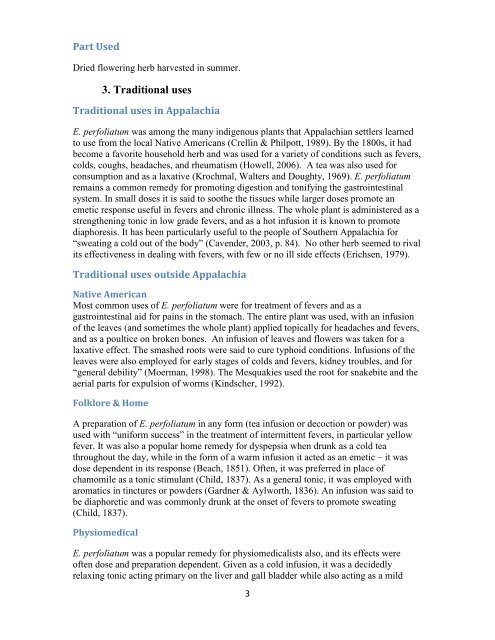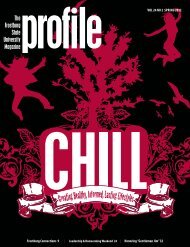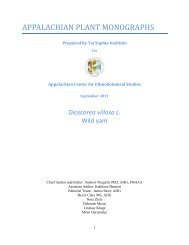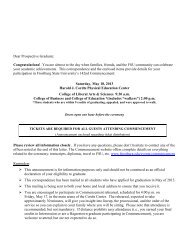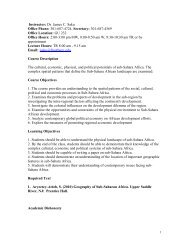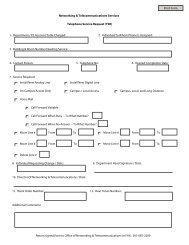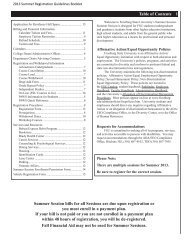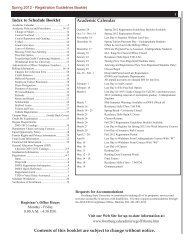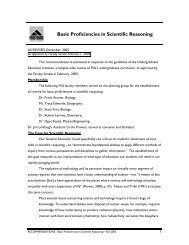Boneset – Eupatorium perfoliatum L - Frostburg State University
Boneset – Eupatorium perfoliatum L - Frostburg State University
Boneset – Eupatorium perfoliatum L - Frostburg State University
You also want an ePaper? Increase the reach of your titles
YUMPU automatically turns print PDFs into web optimized ePapers that Google loves.
Part Used<br />
Dried flowering herb harvested in summer.<br />
3. Traditional uses<br />
Traditional uses in Appalachia<br />
E. <strong>perfoliatum</strong> was among the many indigenous plants that Appalachian settlers learned<br />
to use from the local Native Americans (Crellin & Philpott, 1989). By the 1800s, it had<br />
become a favorite household herb and was used for a variety of conditions such as fevers,<br />
colds, coughs, headaches, and rheumatism (Howell, 2006). A tea was also used for<br />
consumption and as a laxative (Krochmal, Walters and Doughty, 1969). E. <strong>perfoliatum</strong><br />
remains a common remedy for promoting digestion and tonifying the gastrointestinal<br />
system. In small doses it is said to soothe the tissues while larger doses promote an<br />
emetic response useful in fevers and chronic illness. The whole plant is administered as a<br />
strengthening tonic in low grade fevers, and as a hot infusion it is known to promote<br />
diaphoresis. It has been particularly useful to the people of Southern Appalachia for<br />
“sweating a cold out of the body” (Cavender, 2003, p. 84). No other herb seemed to rival<br />
its effectiveness in dealing with fevers, with few or no ill side effects (Erichsen, 1979).<br />
Traditional uses outside Appalachia<br />
Native American<br />
Most common uses of E. <strong>perfoliatum</strong> were for treatment of fevers and as a<br />
gastrointestinal aid for pains in the stomach. The entire plant was used, with an infusion<br />
of the leaves (and sometimes the whole plant) applied topically for headaches and fevers,<br />
and as a poultice on broken bones. An infusion of leaves and flowers was taken for a<br />
laxative effect. The smashed roots were said to cure typhoid conditions. Infusions of the<br />
leaves were also employed for early stages of colds and fevers, kidney troubles, and for<br />
“general debility” (Moerman, 1998). The Mesquakies used the root for snakebite and the<br />
aerial parts for expulsion of worms (Kindscher, 1992).<br />
Folklore & Home<br />
A preparation of E. <strong>perfoliatum</strong> in any form (tea infusion or decoction or powder) was<br />
used with “uniform success” in the treatment of intermittent fevers, in particular yellow<br />
fever. It was also a popular home remedy for dyspepsia when drunk as a cold tea<br />
throughout the day, while in the form of a warm infusion it acted as an emetic <strong>–</strong> it was<br />
dose dependent in its response (Beach, 1851). Often, it was preferred in place of<br />
chamomile as a tonic stimulant (Child, 1837). As a general tonic, it was employed with<br />
aromatics in tinctures or powders (Gardner & Aylworth, 1836). An infusion was said to<br />
be diaphoretic and was commonly drunk at the onset of fevers to promote sweating<br />
(Child, 1837).<br />
Physiomedical<br />
E. <strong>perfoliatum</strong> was a popular remedy for physiomedicalists also, and its effects were<br />
often dose and preparation dependent. Given as a cold infusion, it was a decidedly<br />
relaxing tonic acting primary on the liver and gall bladder while also acting as a mild<br />
3


